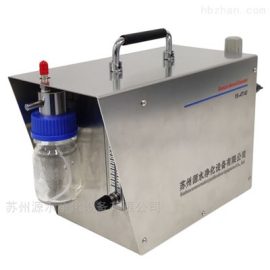
# Aerosol Generator: Principles and Applications in Modern Science
## Introduction to Aerosol Generators
An aerosol generator is a device designed to produce a fine mist or spray of liquid or solid particles suspended in a gas, typically air. These devices are widely used in various scientific, industrial, and medical applications. Understanding the principles behind aerosol generation is crucial for optimizing their use in different fields.
## Principles of Aerosol Generation
The fundamental principle of an aerosol generator involves the conversion of a liquid or solid substance into tiny particles that can be suspended in a gas. This process can be achieved through several methods, including:
– Nebulization: This method uses ultrasonic waves or compressed air to break down a liquid into fine droplets.
– Atomization: High-pressure nozzles or spinning disks are used to create a fine spray of liquid particles.
– Electrospray: An electric field is applied to a liquid to produce charged droplets, which are then dispersed as an aerosol.
Each method has its own advantages and is chosen based on the specific requirements of the application.
## Applications in Modern Science
Aerosol generators have a wide range of applications in modern science, including:
### Medical and Pharmaceutical Fields
In the medical field, aerosol generators are used in nebulizers to deliver medication directly to the lungs. This is particularly beneficial for patients with respiratory conditions such as asthma or chronic obstructive pulmonary disease (COPD). In pharmaceuticals, aerosol generators are used in the development of inhalable drugs, ensuring precise dosing and effective delivery.
### Environmental Science
Aerosol generators play a crucial role in environmental science by simulating atmospheric conditions. They are used to study the behavior of aerosols in the atmosphere, including their impact on climate change and air quality. Researchers use these devices to create controlled environments for testing air filtration systems and studying the dispersion of pollutants.
### Industrial Applications
In industrial settings, aerosol generators are used for coating processes, where a fine mist of paint or other coatings is applied to surfaces. They are also used in the production of fine powders and in the testing of air quality in manufacturing facilities. Additionally, aerosol generators are employed in the food industry for flavoring and preserving products.
### Research and Development
Aerosol generators are indispensable tools in research and development. They are used in laboratories to create controlled aerosol environments for testing new materials, studying particle behavior, and developing new technologies. Their ability to produce consistent and reproducible aerosol particles makes them valuable in a wide range of scientific experiments.
## Conclusion
Aerosol generators are versatile devices with a broad spectrum of applications in modern science. By understanding the principles behind their operation, scientists and engineers can harness their potential to advance research, improve industrial processes, and enhance medical treatments. As technology continues to evolve, the role of aerosol generators in various fields is likely to expand, offering new possibilities for innovation and discovery.
Keyword: Aerosol Generator
